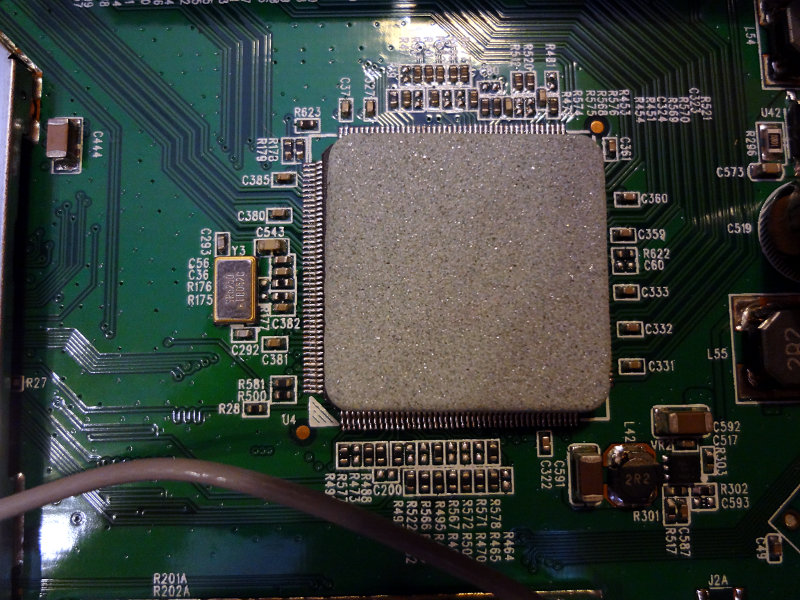I mashed together my Morse Blinker code with the noise making code from the Getting Started with Netduino book to make my Netduino buzz out text in Morse code.
Like the Morse Blinker program, it takes a string provided in the morseText variable and buzzes it out on the little speaker that comes with the kit. Morse code speed is adjusted by changing the beatsPerMinute variable. I haven’t done any testing to figure out how the beatsPerMinute value translates to Morse code words per minute (wpm), but a value of 500 sounds to me like something around 20 wpm.
using System;
using System.Threading;
using System.Collections;
using Microsoft.SPOT;
using Microsoft.SPOT.Hardware;
using SecretLabs.NETMF.Hardware;
using SecretLabs.NETMF.Hardware.Netduino;
namespace MorseBuzzer
{
public class Program
{
public static void Main()
{
// Text to Morse code conversion table
Hashtable morse = new Hashtable();
morse.Add('a', "a1a3");
morse.Add('b', "a3a1a1a1");
morse.Add('c', "a3a1a3a1");
morse.Add('d', "a3a1a1");
morse.Add('e', "a1");
morse.Add('f', "a1a1a3a1");
morse.Add('g', "a3a3a1");
morse.Add('h', "a1a1a1a1");
morse.Add('i', "a1a1");
morse.Add('j', "a1a3a3a3");
morse.Add('k', "a3a1a3");
morse.Add('l', "a1a3a1a1");
morse.Add('m', "a3a3");
morse.Add('n', "a3a1");
morse.Add('o', "a3a3a3");
morse.Add('p', "a1a3a3a1");
morse.Add('q', "a3a3a1a3");
morse.Add('r', "a1a3a1");
morse.Add('s', "a1a1a1");
morse.Add('t', "a3");
morse.Add('u', "a1a1a3");
morse.Add('v', "a1a1a1a3");
morse.Add('w', "a1a3a3");
morse.Add('x', "a3a1a1a3");
morse.Add('y', "a3a1a3a3");
morse.Add('z', "a3a3a1a1");
morse.Add('0', "a3a3a3a3a3");
morse.Add('1', "a1a3a3a3a3");
morse.Add('2', "a1a1a3a3a3");
morse.Add('3', "a1a1a1a3a3");
morse.Add('4', "a1a1a1a1a3");
morse.Add('5', "a1a1a1a1a1");
morse.Add('6', "a3a1a1a1a1");
morse.Add('7', "a3a3a1a1a1");
morse.Add('8', "a3a3a3a1a1");
morse.Add('9', "a3a3a3a3a1");
morse.Add(' ', " ");
morse.Add('.', "a1a3a1a3a1a3");
morse.Add(',', "a3a3a1a1a3a3");
morse.Add('?', "a1a1a3a3a1a1");
morse.Add('!', "a3a1a3a1a3a3");
morse.Add('/', "a3a1a1a3a1");
// Hashtable to store the notes
Hashtable scale = new Hashtable();
scale.Add("c", 1915u);
scale.Add("d", 1700u);
scale.Add("e", 1519u);
scale.Add("f", 1432u);
scale.Add("g", 1275u);
scale.Add("a", 1136u);
scale.Add("b", 1014u);
scale.Add("C", 956u);
scale.Add("D", 851u);
scale.Add("E", 758u);
scale.Add("h", 0u);
// Text to play in Morse code. Change this to whatever you want
string morseText = "ab4ug";
int beatsPerMinute = 500;
int beatTimeInMilliseconds = 60000 / beatsPerMinute;
int pauseTimeInMilliseconds = (int)(beatTimeInMilliseconds * 0.1);
PWM speaker = new PWM(Pins.GPIO_PIN_D5);
while (true)
{
foreach (char c in morseText)
{
// Get the Morse "song" corresponding to the current letter
string song = (string)morse[c];
for (int i = 0; i < song.Length; i += 2)
{
// Extract the note from the string
string note = song.Substring(i, 1);
int beatCount = int.Parse(song.Substring(i + 1, 1));
uint noteDuration = (uint)scale[note];
// Play the note
speaker.SetPulse(noteDuration * 2, noteDuration);
Thread.Sleep(beatTimeInMilliseconds * beatCount - pauseTimeInMilliseconds);
// pause for 1/10th of a beat
speaker.SetDutyCycle(0);
Thread.Sleep(pauseTimeInMilliseconds);
}
// Pause for one beat between each character
speaker.SetDutyCycle(0);
Thread.Sleep(beatTimeInMilliseconds);
}
// Pause for five beats before repeating
speaker.SetDutyCycle(0);
Thread.Sleep(beatTimeInMilliseconds * 5);
}
}
}
}
The latest version is over in my Github. I’ll probably spend some time redoing Morse code translation table to make changing the tone easier.
Like this:
Like Loading...





